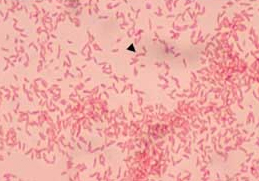Investigations
1st investigations to order
full blood count
Test
Part of the initial assessment of the septic patient.
Transfusion of packed red blood cells is recommended if haemoglobin is <70 g/L (7.0 g/dL), taking into consideration the patient’s overall clinical status.[42]
Result
may show neutropenia, leukocytosis, anaemia
platelet count
Test
Part of the initial assessment of the septic patient.
Platelet transfusion is recommended when counts are <10 × 10⁹/L (<10 × 10³/microlitre) in the absence of bleeding and <20 × 10⁹/L (<20 × 10³/microlitre) where there is significant bleeding, or if indicated for surgical- or procedure-related haemostasis.[51]
Result
may be decreased
basic metabolic panel
Test
Abnormal creatinine, albumin level, and liver function tests are markers for organ dysfunction occurring during sepsis.
Serum creatinine helps to guide the use of pharmacological agents requiring dosing adjustment for renal function.
Electrolytes help to assess level of dehydration and presence of metabolic acidosis.
Result
bicarbonate may be decreased, creatinine may be elevated
blood lactate
Test
In patients with clinically suspected but unconfirmed sepsis, blood lactate may be used as an adjunctive diagnostic test.[42]
Result
may be elevated; levels >2 mmol/L (>18 mg/dL) associated with adverse prognosis; prognosis worsens with levels >4 mmol/L (>36 mg/dL)
blood culture
Test
Confirmatory test in sepsis without skin lesions.
May help to identify the organism in lower-extremity necrotising cellulitis with/without sepsis.
Indicated in patients with gastroenteritis syndromes if they are febrile or have other signs of possible sepsis.
Blood cultures should be obtained before starting treatment with antibiotics if doing so results in no substantial delay to treatment (i.e., <45 minutes).[42]
Result
positive for gram-negative rods
wound swab for Gram stain
Test
Cutaneous bullae fluid and the ulcer base should be swabbed for Gram stain. A negative stain is not helpful. A stain demonstrating gram-negative rods in the setting of a patient with underlying comorbidities and shellfish or marine water exposure suggest a Vibrio infection.[Figure caption and citation for the preceding image starts]: Gram-negative curved bacilli (arrowhead) isolated from a blood sampleFrom the image collection of the Centers for Disease Control and Prevention [Citation ends].
Result
gram-negative rods
wound swab for culture
Test
Bullous fluid and the ulcer base should be routinely cultured. Ideally, the specimen should be inoculated directly onto bacteriological media. If specimen transport is required, contacting the laboratory for transport media supportive of Vibrio is recommended. Some transport tubes containing buffered glycerol saline may be toxic to vibrios.[37]
Result
Vibrio species isolated
stool culture
Test
Should be ordered in patients with diarrhoeic symptoms. For suspected Vibrio infection following shellfish exposure, contacting the laboratory to include thiosulphate-citrate-bile salts-sucrose (TCBS) agar as a selective culture medium for vibrios is recommended.[37][47]
Result
Vibrio species isolated
ear canal swab for culture
Test
Should be performed for patients with otitis externa not responding to routine empirical antimicrobial therapy who have a history of brackish or ocean water exposure.
Result
Vibrio species isolated
conjunctival swab, corneal scraping, or chamber aspirates for culture
Test
In patients with suspected Vibrio ocular infection, the diagnosis is made by Gram-stained smear, culture, and in vitro susceptibility testing of isolates from appropriate ocular specimens (i.e., conjunctival swab, corneal scraping, anterior or posterior chamber aspirates for conjunctivitis, keratitis, hypopyon, or endophthalmitis, respectively).
Result
Vibrio species isolated
culture-independent diagnostic testing (CIDT)
Test
Can be used to identify Vibrio, but positive specimens should be confirmed by culture where possible.[45] Stool specimens can be tested for Vibrio using a PCR array. Whole genome next generation sequencing can identify pathogens in blood independent of culture. MALDI-TOF (matrix-assisted laser desorption ionisation-time of flight mass spectroscopy) can be used to rapidly identify cultured organisms.
Result
Vibrio species detected
Use of this content is subject to our disclaimer